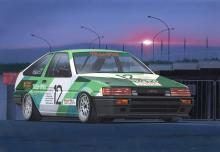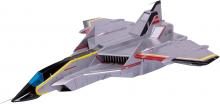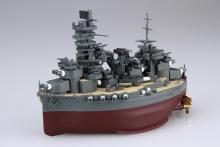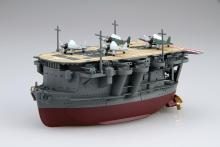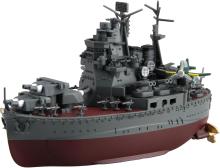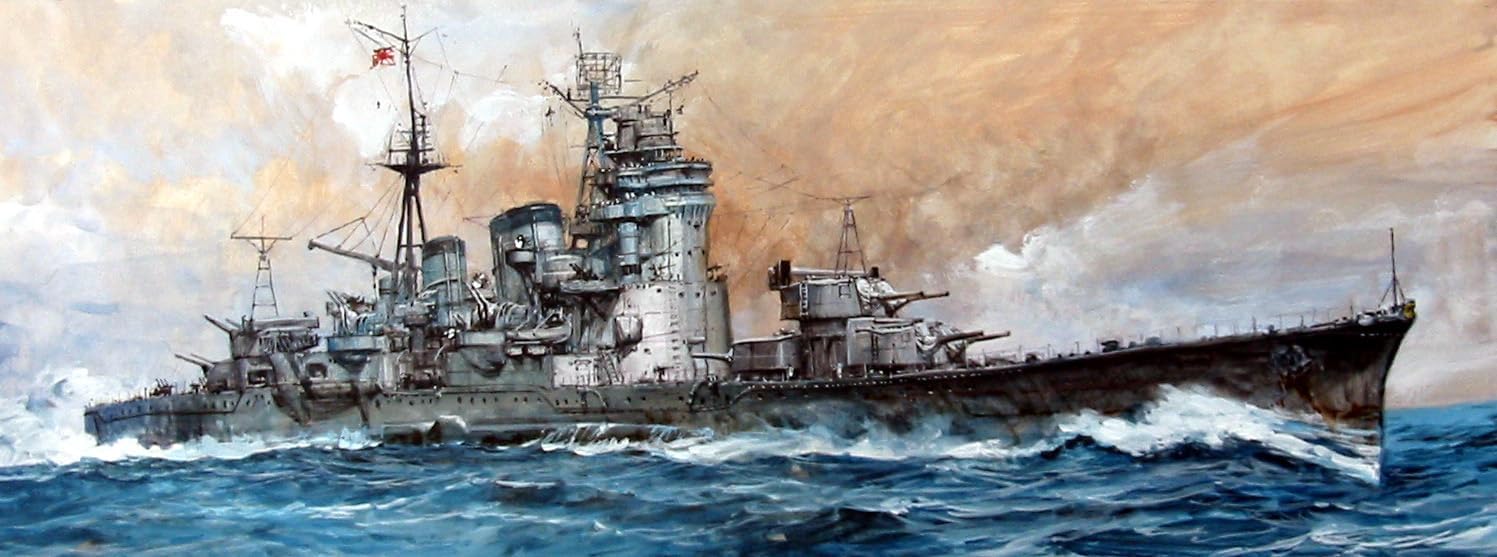Shipping and Returns
Europe, UK: Thursday, Nov 13
USA: Tuesday, Nov 11
Australia: Thursday, Nov 13
Asia: Wednesday, Nov 12
UAE: Thursday, Nov 13
Order within 15 Hours 0 mins with Scheduled Delivery. If you place an order within this time, We will ship on Monday, Nov 10 2025. This delivery time is calculated by DHL & Fedex. You can check the exact delivery date on checkout page.
USA: Tuesday, Nov 11
Australia: Thursday, Nov 13
Asia: Wednesday, Nov 12
UAE: Thursday, Nov 13
Order within 15 Hours 0 mins with Scheduled Delivery. If you place an order within this time, We will ship on Monday, Nov 10 2025. This delivery time is calculated by DHL & Fedex. You can check the exact delivery date on checkout page.
Buyer Protection
Full refund if not genuine. Full or partial refund, if the new item is not as described.
Customer Reviews (0 rating)
No reviews on this item...
Description (8,347 characters)
Plastic Models
[Scale] 1/700
You can choose from different appearances from the start of the war in 1941 to 1944! New parts have been added! The product is an unpainted kit that requires assembly and painting.
The scale is 1/700, and the model does not include the bottom of the ship.
This product is made up of conventional (special series) molds and newly added mold parts.
The Myoko-class heavy cruisers were planned and constructed under the Washington Naval Treaty. Four ships were built: the lead ship Myoko, the Nachi, the Ashigara, and the Haguro.
Completed in 1929 at the Yokosuka Naval Arsenal, it was equipped with five twin 20-cm guns and four triple torpedo tubes, making it a well-balanced ship with excellent offensive and defensive capabilities.
Before the outbreak of the Pacific War, the ship had been remodeled twice, with the main guns changed to 20.3 cm, the displacement was 13,000 tons, and the 132,830 horsepower engine gave it a speed of 33.8 knots.
After the war began, the ship was engaged in and supported the Southern Invasion Operation, and participated in major fleet operations such as the Battle of the Coral Sea, the Battle of Midway, and the Battle of the Mariana Islands.
In October 1944, the ship was hit by a torpedo during the Battle of Leyte Gulf and retreated to Colon. After emergency repairs, it headed for the mainland, but was rendered unable to proceed by a torpedo attack from a submarine. It was towed to Haguro and moored as an air defense battery at the Seletar Naval Base in Singapore. After the war, it was seized by the British Navy and sunk at sea.
The product can be made to look like the first Myoko-class ship, the Myoko, at the start of the war (1941-), during the Battle of the Mariana Sea (1943-1944), or during the Battle of Leyte Gulf (October 1944).
At the start of the war in 1941, the lookout post was small and the bridge was equipped with twin 13mm machine guns on both sides.
After 1943, during the Battle of the Mariana Sea, the No. 21 radar was installed, the number of twin 25mm machine guns was increased, and an air defense command post and windbreak were installed.
During the Battle of Leyte Gulf in 1944, it was equipped with No. 13/No. 22 radar, triple 25mm machine guns, and single machine guns.
New molds have been used to standardize the differences in the reproduction of equipment depending on the product release date, and some parts have been divided to take painting into consideration. The No. 13 radar is a new part with a truss structure and a shaped antenna.
The No. 21 radar is depicted with more delicate engravings than previous accessory parts, such as the insulator base for fixing the element on the front side.
・The No. 22 radar is made into a part in an open state by using a slide mold.
・The 12.7cm twin anti-aircraft gun A1 Kai 1 is divided into 5 parts, with improved modeling resolution compared to the existing 2 parts.
The 9m cutter is made into two parts for painting, and the stand is available as a separate part, or you can choose to use the deck as a one-piece mold.
・The canvas, wheelhouse and engine room canopy of the 11m motorboat are separate parts to allow for painting.
Each painting is done and assembly and bonding are done later.
・The 12m internal fire launch can now be expressed without the canvas
- The shipboard stand has a molded uneven shape and light holes, giving it a more precise appearance.
- New parts are used for the chrysanthemum crest on the bow and the side lights on the bridge
- Special parts are provided for lifebuoys on the stern and sides of the bridge.
The parts included at the time of release have been changed to more recent standard parts.
The 110cm searchlight and 60cm signal searchlight include common parts.
The Kure Type 2-5 injection machine contains parts made using slide molds.
- Binocular telescope parts have been added to the air defense command post and compass bridge.
- Added decals for the ship name on the stern (painted in battleship colors) and the white lines on the mast
- The Type 96 25mm machine gun is now standardly constructed in two parts, reducing the amount of painting required.
Hull: The hull is a one-piece structure with the left and right sides molded as a single unit, allowing for a more stable shape when assembled compared to a left and right joint assembly.
- The bulge, which is a characteristic feature of the ship's side, is depicted as one with the hull.
- The portholes are as they were at the start of the war, and the external electrical wiring is recreated as a single sculpture on the hull.
Each deck: The upper deck is a single piece, the front and shelter decks are separate parts, and the rear part is integrated with the hull.
-Various details are reproduced, such as the machine gun ammunition box, the single machine gun mounting area, and the hose reel.
- The shelter deck is a separate part, and the torpedo equipment compartment on the lower level is also reproduced.
Bridge and mast: The bridge base, which is made up of distinctive curved surfaces, is made three-dimensional by combining the front and side parts.
- Separate parts are provided for the airborne lookout post/air defense command post to recreate yearly differences.
- Each deck, including the compass bridge and lower lookout post, is precisely constructed using a stacked structure.
The front mast is recreated with two separate parts, one for the time of the outbreak of war and the other for the revised form that was used afterwards.
Main gun turret, chimney, and main gun barrel are fixed to the turret, and the turret is equipped with a polycap so that it can rotate.
- The range finder hoods for the 2nd and 4th turrets are equipped with special parts to recreate their final appearance.
・The front and rear chimneys are both split into left and right sections, and the handrails, double scaffolding and steam exhaust pipes are all depicted as one piece sculptures.
The rear mast is made up of three parts, separated above and below the cross tree.
- The floatplane hoisting crane has been replaced with a hoist crane type for a three-dimensional representation.
- The aircraft work deck has linoleum-covered presser foot engraved on it.
-The molding color is gray to improve workability (to prevent damage when cutting the gate).
- Two each of the Type 95 floatplane, Zero (three-seater) floatplane, and Zero observation floatplane are included.
- It is possible to recreate the loading conditions of two Type 95 floatplanes and one Type Zero floatplane from 1941 to 1942.
- It is possible to recreate the loading conditions of two A6M Zero floatplanes and one A6M Zero reconnaissance floatplane from 1942 onwards.
Included decals: Includes markings such as naval ensigns, national flags, and the Japanese flag for aircraft carriers.
・Military flags are available in three sizes
The contents are 1/700 scale versions of the actual 10, 6, and 3 widths.
- Includes the Hinomaru flag of carrier-based aircraft, friendly identification belt (yellow belt), etc., and the Hinomaru flag also includes the one without the white border from the later period of the war.
- Decals featuring the white lines on the mast and the ship's name on the stern (in two colors: gold and solid in naval colors)
[Included Contents] ・Runners x 28 ・Assembly instructions x 1 ・Decals x 2 *This product is made in Japan.
*This product is a plastic model kit that requires assembly.
Dimensions: 41 x 15 x 6 cm
Model Number: Special-7
Tags:
[Scale] 1/700
You can choose from different appearances from the start of the war in 1941 to 1944! New parts have been added! The product is an unpainted kit that requires assembly and painting.
The scale is 1/700, and the model does not include the bottom of the ship.
This product is made up of conventional (special series) molds and newly added mold parts.
The Myoko-class heavy cruisers were planned and constructed under the Washington Naval Treaty. Four ships were built: the lead ship Myoko, the Nachi, the Ashigara, and the Haguro.
Completed in 1929 at the Yokosuka Naval Arsenal, it was equipped with five twin 20-cm guns and four triple torpedo tubes, making it a well-balanced ship with excellent offensive and defensive capabilities.
Before the outbreak of the Pacific War, the ship had been remodeled twice, with the main guns changed to 20.3 cm, the displacement was 13,000 tons, and the 132,830 horsepower engine gave it a speed of 33.8 knots.
After the war began, the ship was engaged in and supported the Southern Invasion Operation, and participated in major fleet operations such as the Battle of the Coral Sea, the Battle of Midway, and the Battle of the Mariana Islands.
In October 1944, the ship was hit by a torpedo during the Battle of Leyte Gulf and retreated to Colon. After emergency repairs, it headed for the mainland, but was rendered unable to proceed by a torpedo attack from a submarine. It was towed to Haguro and moored as an air defense battery at the Seletar Naval Base in Singapore. After the war, it was seized by the British Navy and sunk at sea.
The product can be made to look like the first Myoko-class ship, the Myoko, at the start of the war (1941-), during the Battle of the Mariana Sea (1943-1944), or during the Battle of Leyte Gulf (October 1944).
At the start of the war in 1941, the lookout post was small and the bridge was equipped with twin 13mm machine guns on both sides.
After 1943, during the Battle of the Mariana Sea, the No. 21 radar was installed, the number of twin 25mm machine guns was increased, and an air defense command post and windbreak were installed.
During the Battle of Leyte Gulf in 1944, it was equipped with No. 13/No. 22 radar, triple 25mm machine guns, and single machine guns.
New molds have been used to standardize the differences in the reproduction of equipment depending on the product release date, and some parts have been divided to take painting into consideration. The No. 13 radar is a new part with a truss structure and a shaped antenna.
The No. 21 radar is depicted with more delicate engravings than previous accessory parts, such as the insulator base for fixing the element on the front side.
・The No. 22 radar is made into a part in an open state by using a slide mold.
・The 12.7cm twin anti-aircraft gun A1 Kai 1 is divided into 5 parts, with improved modeling resolution compared to the existing 2 parts.
The 9m cutter is made into two parts for painting, and the stand is available as a separate part, or you can choose to use the deck as a one-piece mold.
・The canvas, wheelhouse and engine room canopy of the 11m motorboat are separate parts to allow for painting.
Each painting is done and assembly and bonding are done later.
・The 12m internal fire launch can now be expressed without the canvas
- The shipboard stand has a molded uneven shape and light holes, giving it a more precise appearance.
- New parts are used for the chrysanthemum crest on the bow and the side lights on the bridge
- Special parts are provided for lifebuoys on the stern and sides of the bridge.
The parts included at the time of release have been changed to more recent standard parts.
The 110cm searchlight and 60cm signal searchlight include common parts.
The Kure Type 2-5 injection machine contains parts made using slide molds.
- Binocular telescope parts have been added to the air defense command post and compass bridge.
- Added decals for the ship name on the stern (painted in battleship colors) and the white lines on the mast
- The Type 96 25mm machine gun is now standardly constructed in two parts, reducing the amount of painting required.
Hull: The hull is a one-piece structure with the left and right sides molded as a single unit, allowing for a more stable shape when assembled compared to a left and right joint assembly.
- The bulge, which is a characteristic feature of the ship's side, is depicted as one with the hull.
- The portholes are as they were at the start of the war, and the external electrical wiring is recreated as a single sculpture on the hull.
Each deck: The upper deck is a single piece, the front and shelter decks are separate parts, and the rear part is integrated with the hull.
-Various details are reproduced, such as the machine gun ammunition box, the single machine gun mounting area, and the hose reel.
- The shelter deck is a separate part, and the torpedo equipment compartment on the lower level is also reproduced.
Bridge and mast: The bridge base, which is made up of distinctive curved surfaces, is made three-dimensional by combining the front and side parts.
- Separate parts are provided for the airborne lookout post/air defense command post to recreate yearly differences.
- Each deck, including the compass bridge and lower lookout post, is precisely constructed using a stacked structure.
The front mast is recreated with two separate parts, one for the time of the outbreak of war and the other for the revised form that was used afterwards.
Main gun turret, chimney, and main gun barrel are fixed to the turret, and the turret is equipped with a polycap so that it can rotate.
- The range finder hoods for the 2nd and 4th turrets are equipped with special parts to recreate their final appearance.
・The front and rear chimneys are both split into left and right sections, and the handrails, double scaffolding and steam exhaust pipes are all depicted as one piece sculptures.
The rear mast is made up of three parts, separated above and below the cross tree.
- The floatplane hoisting crane has been replaced with a hoist crane type for a three-dimensional representation.
- The aircraft work deck has linoleum-covered presser foot engraved on it.
-The molding color is gray to improve workability (to prevent damage when cutting the gate).
- Two each of the Type 95 floatplane, Zero (three-seater) floatplane, and Zero observation floatplane are included.
- It is possible to recreate the loading conditions of two Type 95 floatplanes and one Type Zero floatplane from 1941 to 1942.
- It is possible to recreate the loading conditions of two A6M Zero floatplanes and one A6M Zero reconnaissance floatplane from 1942 onwards.
Included decals: Includes markings such as naval ensigns, national flags, and the Japanese flag for aircraft carriers.
・Military flags are available in three sizes
The contents are 1/700 scale versions of the actual 10, 6, and 3 widths.
- Includes the Hinomaru flag of carrier-based aircraft, friendly identification belt (yellow belt), etc., and the Hinomaru flag also includes the one without the white border from the later period of the war.
- Decals featuring the white lines on the mast and the ship's name on the stern (in two colors: gold and solid in naval colors)
[Included Contents] ・Runners x 28 ・Assembly instructions x 1 ・Decals x 2 *This product is made in Japan.
*This product is a plastic model kit that requires assembly.
Dimensions: 41 x 15 x 6 cm
Model Number: Special-7
Tags:
FUJIMI Imperial Japanese Navy Cruiser Light cruiser Heavy cruiser Battlecruiser Myōkō-class cruiser Japanese cruiser Myōkō 船・潜水艦 Fujimi Ijn Heavy Cruiser Myoko



